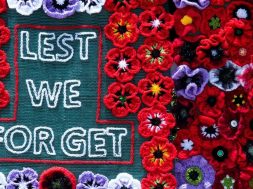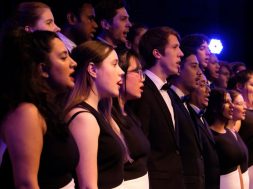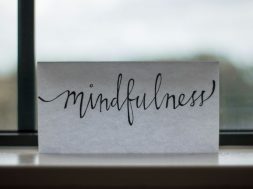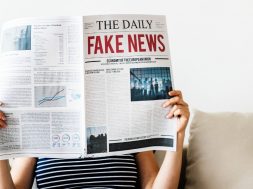By: Michael McQueen
This year, more than any, we have seen the power of fake news. Politics, climate change, public scandals and the virus which has overwhelmed our year, have revealed a vulnerability in society’s ways of consuming news and information.
My colleague and friend Claire Madden suggests that students today are increasingly ‘brokers of information’ not ‘knowers of content’.[1] This is an important distinction and a dangerous trend as it means students are often very willing to propagate information without discerning its veracity or accuracy. This trend in young people carries just as easily to older generations whose engagement on digital platforms also leaves them vulnerable to misinformation.
In a world of fake news, alternative facts and conspiracy theories, in which each individual learns and shares information on complex and powerful digital platforms, this trend reaches new levels of danger. The ability to discern fact from fiction is fundamental.
Recent studies, including the popular Netflix documentary The Social Dilemma, have revealed that the stories that flourish best on digital platforms are the most outrageous ones. Leaders, politicians, public figures and other digital contributors benefit most from spreading fake news, as the platforms they are operating on are designed to maximise engagement and grab attention.
People are most likely to share a post when they experience some kind of emotional or social connection to it, or the post has already generated popularity. As fear, anger and panic are some of the strongest emotional responses and the best ways of grabbing attention, the articles, videos and posts that generate the most likes, shares and comments are often the ones that spread hysteria and misinformation.
Particularly in times like these, when uncertainty and fear are rampant, the individual’s vulnerability to misinformation is magnified. People are more willing to accept information without verifying its accuracy.[2] However, particularly in times like these, correct information can literally mean the difference between life and death.
Counteracting this trend at a young age is essential, especially as the ones who are most dependent on these platforms are young people. Beyond simply consuming social media as a source of connection, attention and increasingly addiction, young people are known to treat their digital platforms as their sources of news and information. Young people’s ability to adjust to a world that is fighting for their attention, and using fake news to do it, is essential and the skill that will help them to do this is critical thinking.
Critical thinking has been emphasised consistently in school curriculums in recent years, but the ongoing need for this skill is urgently increasing.
In response to the proliferation of conspiracy and fake news in Russia and the broader globe, Finland in 2014 began to implement a system of teaching critical thinking in schools and included media literacy in this.[3]
Students are taught to interrogate a source before accepting its information as well as to evaluate the statistics and numbers that are often used to bring a semblance of truth to conspiracy.
Beyond this, many schools are now also working to teach students to not only understand and challenge a source’s bias, but to understand and challenge their own bias.[4] Psychologically and sociologically, bias informs the everyday patterns of behaviour that people engage in. Our emotional connections to a piece of information, as well as how a certain fact relates to our social circles and stances will determine the way we perceive its truth. The political polarisation evident on social media platforms is a product of this, as people are biased to receive and believe information that relates best to the beliefs and communities which they are already part of.[5]
Therefore, students learning to critically evaluate their own engagement with facts is essential. Thinking reflexively about what already informs their perspectives, behaviour and beliefs is key to ensuring their own social position and identity doesn’t restrict their access to facts.
A number of organisations have done great work in recent years to develop resources for helping educators build the skills of discernment in students through asking good questions.
Elizabeth Thoman of the Center for Media Literacy offers a fantastic list of questions for evaluating content or messaging:[6]
- Who created or paid for the message?
- Why was it created?
- Who is the message designed to reach?
- How does the message get my attention?
- How might different people from me understand this message differently?
- What values, lifestyles, points of view are included or excluded – and why?
Arthur Costa and Bena Kallick offer some similarly powerful questions for building critical thinking skills in students:
- What data supports this finding?
- How do you know it is true?
- On what assumptions are you basing your conclusions?
- From whose viewpoint are you perceiving this?
- How are these events or situations related to each other?
- Hypothetical questions like ‘What do you think would happen if …’ or ‘If that is true, what might happen if …’[7]
Naturally, being a facilitator of learning is more than simply asking good questions. John Hattie suggests that other facilitation skills are also powerful, including role-playing, simulations and gaming.[8]
Regardless of the facilitation techniques employed, what matters most is that educators recognise that the traditional ‘fount of knowledge’ or ‘telling’ mode can no longer be the default teaching approach. By all means there will still be times when the ‘fount’ modality will still be relevant and effective, but, as educationalist Ted McCain suggests, this modality will only be one small part of the teacher’s tool belt in the future.
Emphasising independent learning and thinking and the ability to interrogate a source with logic, reflexivity and critical thinking is essential as young people move deeper into a world in which fake news, conspiracies and misinformation consistently go viral.
[1] Madden, C. 2017, Hello Gen Z, Hello Clarity, Sydney, p. 193.
[2] Roulet, T 2020, ‘To combat conspiracy theories teach critical thinking – and community values,’ The Conversation, 2 October.
[3] Roulet, T 2020, ‘To combat conspiracy theories teach critical thinking – and community values,’ The Conversation, 2 October.
[4] Hodson, J 2020, ‘Teaching children digital literacy skills helps them navigate and respond to misinformation,’ The Conversation, 13 September.
[5] Ciampaglia, G L, Menczer, F 2018, ‘Misinformation and biases infect social media, both intentionally and accidentally,’ The Conversation, 20 June.
[6]Jacobs, H. 2010, Curriculum 21, ACSD, Alexandria, pp. 139, 140.
[7] Bellanca, J. 2015, Deeper Learning – Beyond 21st Century Skills, Solution Tree Press, Bloomington, pp. 63, 64.
[8] Ibid., p. 277.
Article supplied with thanks to Michael McQueen.
About the Author: Michael is a trends forecaster, business strategist and award-winning conference speaker.










